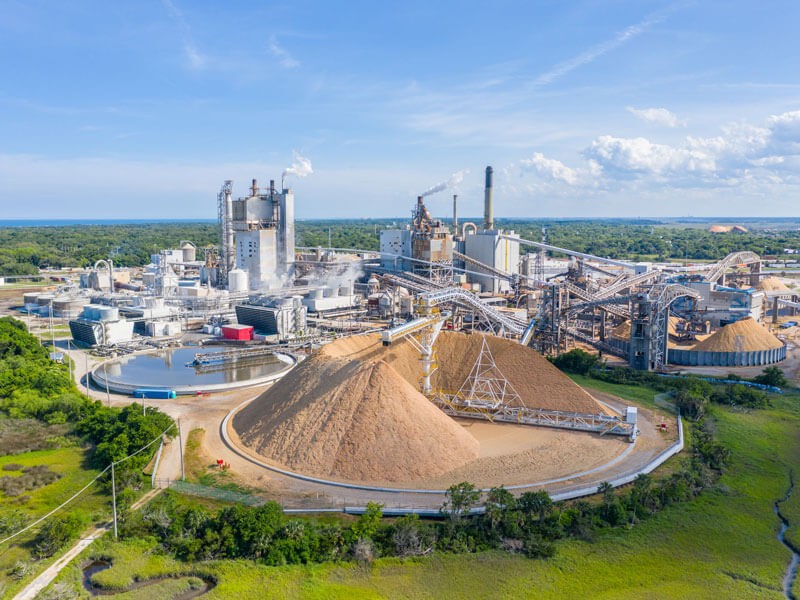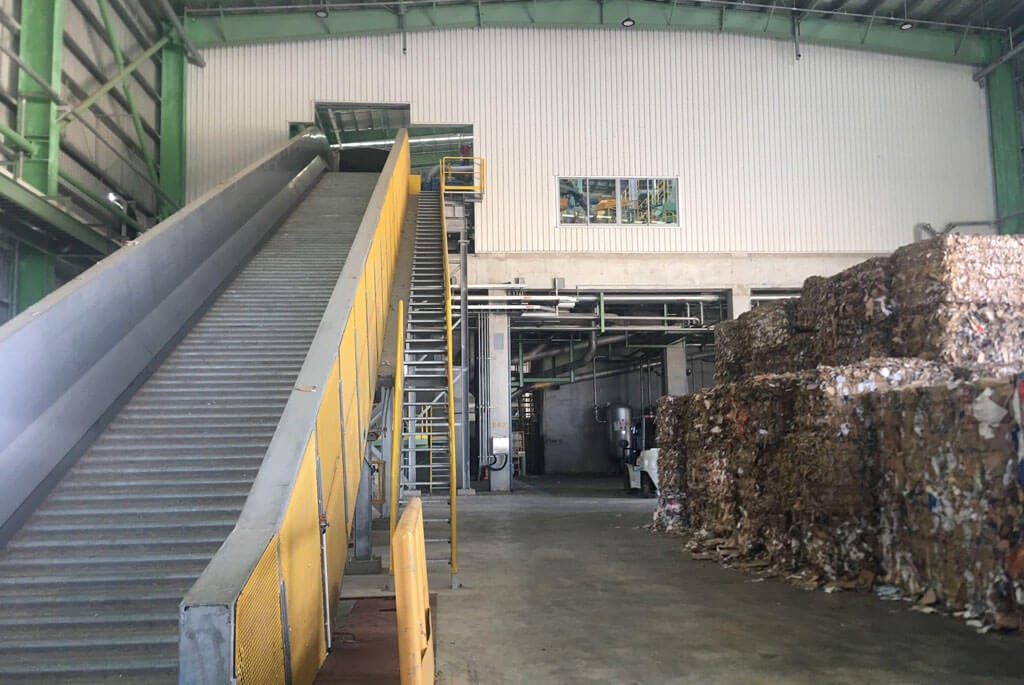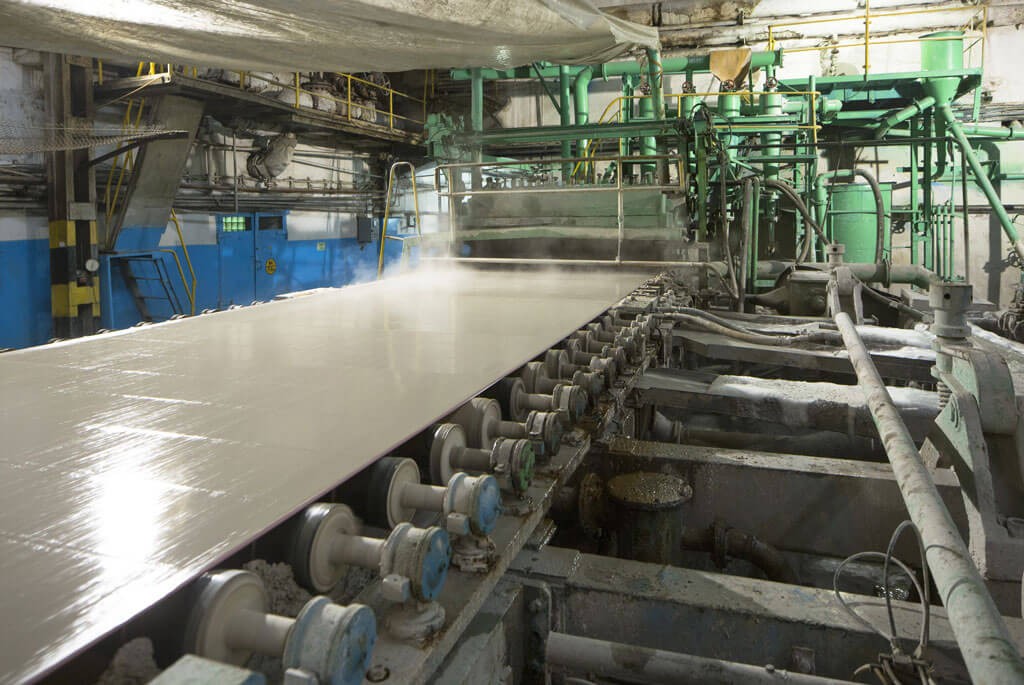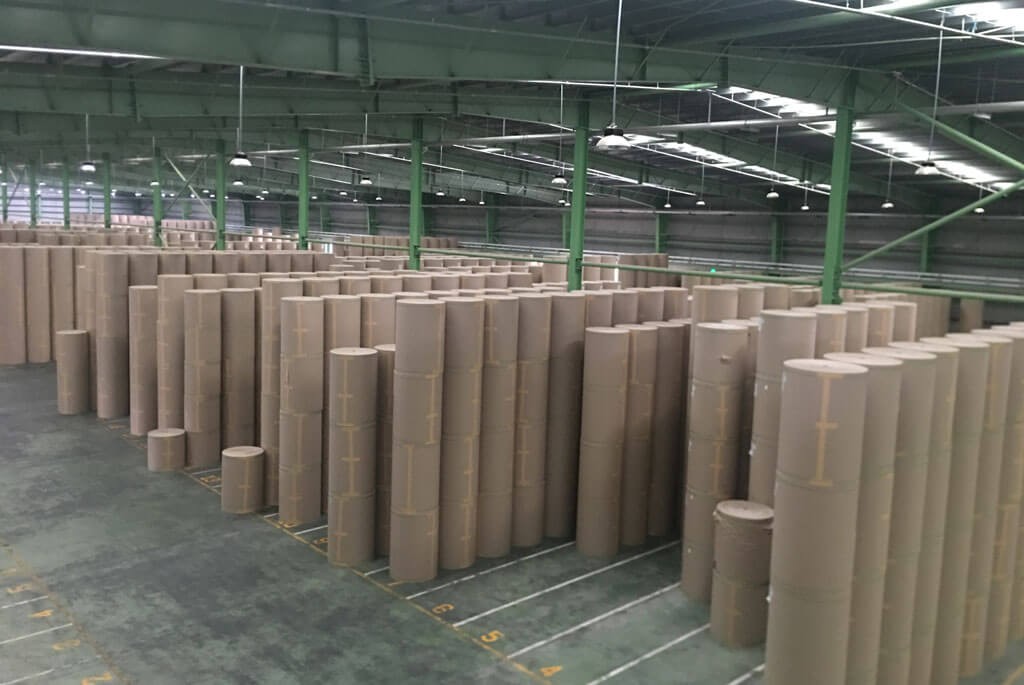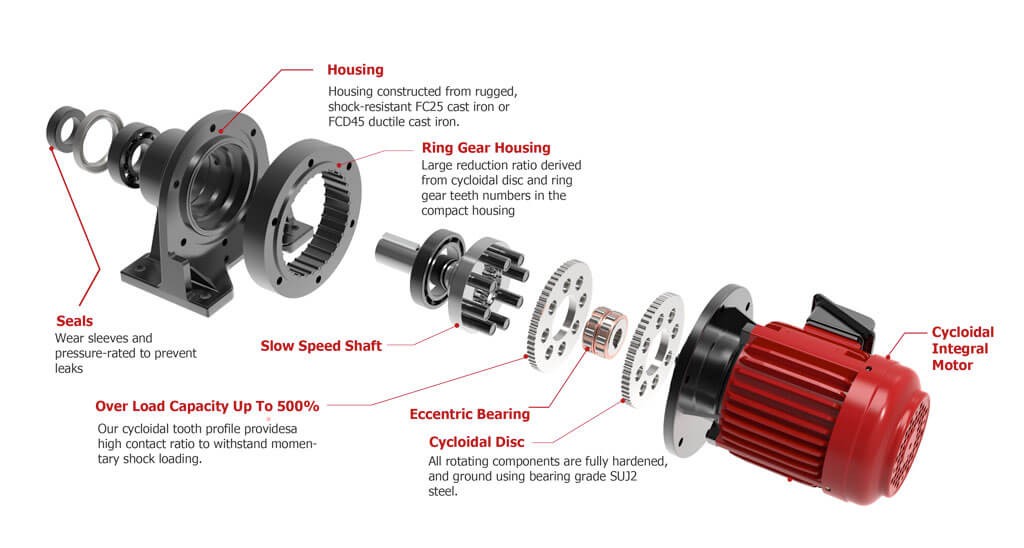Cyclo Drives For Paper Mills
Flexibility and versatility make cyclo drives ideally suited for paper manufacturing
Reliable & Versatile Cyclo Drives For Paper Milling
Paper mills feature a wide range of preparation and processing activities all occurring on the same site, from debarking and pulping of timber logs through to manufacture of finished rolls of paper. The wide range of machinery required and significant number of stages in paper manufacturing are an excellent match for the phenomenal versatility and reliability of cyclo drives.
The range of machinery that can be powered with cyclo drives in paper mills is impressive. Cyclo drives are found in all stages of the paper-making process, driving conveyors, agitators and calenders as well as machinery to roll and transport finished products.
Cyclo drives are very widely used in the related lumber industry, and paper mills that manufacture their own pulp on-site have similar requirements for barkers, cutters and material transport solutions.
Cyclo Drives For Conveyors & Paper Transport
Reliable conveyors are a crucial element in paper manufacturing. When manufacturing paper it is necessary to be able to move it very rapidly without risk of tearing, and also be able to control rolls of paper that are extremely heavy. This is especially important when passing wet pulp through chemical treatments and pressing it to remove water.
Chemical Resistant Drives Are Essential In The Paper Industry
In paper milling, not only is it necessary to manage the changing weight of paper rolls and the changing strength of the paper during manufacture, from wet pulp through to a finished product, but many processes use chemical treatments to bleach and improve the quality of paper.
Cyclo drives are easily sealed against contamination and chemical damage. This is an additional desirable feature compared to planetary drives, which are harder to protect. The chemicals used to remove lignin from high quality paper can cause premature failure of planetary gearboxes and other components.
The changing size of paper rolls during production adds the potential for high shock loadings and demands that the drive is able to maintain very accurate speeds across a very wide range of loads to avoid tearing and damage caused by imprecise rotational speeds.
Cyclo drives are ideally suited for this type of operation as they are able to maintain very precise speeds across their full load range, a critically important feature when handling the heavy and variable rotating loads found in paper mills.
Applications Of Cyclo Drives In Paper Milling
The list of applications for cyclo drives in paper milling is extensive, ranging from simple debarking and pulping machines through aerators and agitators to calender rollers for water removal. Cyclo drives are also used for felt manufacturing processes as well as being the most reliable option for conveyors and transport.
- Aerators
- Agitators (mixers)
- Barker Auxiliaries, Hydraulic
- Barker, Mechanical
- Barking Drum
- Beater & Pulper
- Bleacher
- Calenders
- Calenders – Super Converting Machines, except Cutters, Platers
- Conveyors
- Conveyors, Log
- Couch
- Cutters, Platers
- Cylinders
- Dryers
- Felt Stretchers
- Felt Whippers
- Jordans
- Log Haul
- Presses
- Pulp Machines, Reel
- Stock Chests
- Suction Rolls
- Washers & Thickeners
- Winders
Cyclo Drives Feature Shock Resistance & High Load Ratings
Cyclo gearmotors and cyclo drives are ideally suited to these applications. Paper mill machinery has to be able to resist high shock loadings and there are many transport tasks that need to be carried out. Cyclo drives are the perfect choice for reliable shock-resistant duties, and are more efficient than conventional planetary gearboxes.
Efficiency Gains From Cyclo Drives In Paper Mills
Efficiency gains from using cyclo drives in paper mills are partly because a smaller size of cyclo drive can be used to achieve the same performance rating as a larger conventional gearbox. Added flexibility comes from the ability to use standard cyclo drives across a wide range of machinery, ensuring uniform maintenance with a smaller inventory of parts.
Selecting A Cyclo Drive For Paper Mill Use
How do I select a cyclo gearmotor?
The selection of a suitable cyclo gearmotor depends on motor horsepower and/or torque requirements measured at the output shaft. Cyclo gearmotors are very efficient over a wide range of reduction ratios. This often means that input power can be reduced, requiring a motor with a lower HP rating, without losing output shaft torque.
What information do I need to select a cyclo drive?
To identify the correct cyclo drive for your requirements, you will need to consider:
- The application: what type of machine is being driven
- Expected daily hours of operation
- Motor horsepower (HP) and speed (RPM)
- Mounting type: vertical, horizontal, right-angle…
Also make a note of any specialized requirements including environmental exposure as this will be useful in determining specific casing and construction details.
How are Service Classes used for cyclo gearmotors & drives?
AGMA-defined Service Classes are applied to rate cyclo gearmotors for defined operational loading conditions. AGMA Service Classifications for gearmotors are: uniform (I), moderate shock (II), and heavy shock (III). These classifications enable you to fit your product selection to specific tasks.
In paper mills, most applications are AGMA Service Class II, but some are Class III. This is because of the requirement to handle very heavy rolls of finished paper as well as carry out a range of heavy duty conveyor and pulp processing activities.
Will a cyclo gearmotor withstand unexpected shock loads?
The design features of cyclo gearmotors and cyclo drives make them more shock resistant than planetary gearmotors. This is because loads are spread evenly between moving parts. Cyclo drives and gearmotors can withstand momentary intermittent shocks of 500% of the standard rating. Planetary gearmotors are normally rated to a maximum 300% momentary shock overload. Our technical team will be happy to design a custom configuration if you expect shock loads greater than 500% of the rating.
What are the standard input speeds for cyclo gearmotors?
Standard cyclo motor speeds at 60Hz are 1750 and 1165 RPM, which equates to 1450 and 980 RPM at 50Hz. Non-standard input speeds will need to be calculated to determine how they affect horsepower and torque ratings. Our technical team are always happy to discuss any requirement.
What are the thermal capacity limitations of cyclo drives?
The smooth, almost frictionless operation (unlike traditional helical gears) of cyclo drives gives them a thermal rating that is beyond the mechanical capacity of the cyclo drive. Cyclo drives are not subject to conventional heat limitations even when worked hard because of the shared internal loadings within the drive.
What inverter turn-down ratio is available?
A 10:1 ratio is standard for unbraked motors. Braked motors may be limited to 4:1 or better depending on power rating. A 1000:1 ratio is available in a C-face configuration.
Key Features of Transcyko 600 Series Cyclo Drives
- Wear sleeves and pressure rated seals ensure excellent sealing of the cycloidal drive even in harsh conditions.
- Casings constructed of rugged, shock-resistant FC25 cast iron or FCD45 ductile cast iron.
- Reduction gearing is contained in a compact ring gear housing for high power density enabling large reduction ratios.
- Fail-safe service as stresses are shared across 60% of component parts during operation, compared to 5% or less for conventional drives.
- Rotating components are vacuum degassed, hardened bearing grade SUJ2 steel for consistent and reliable performance.
- Output shafts can be customized to any size or material requirement.
- Overload capacity withstands momentary shock loads of up to 500% of normal operational range.
